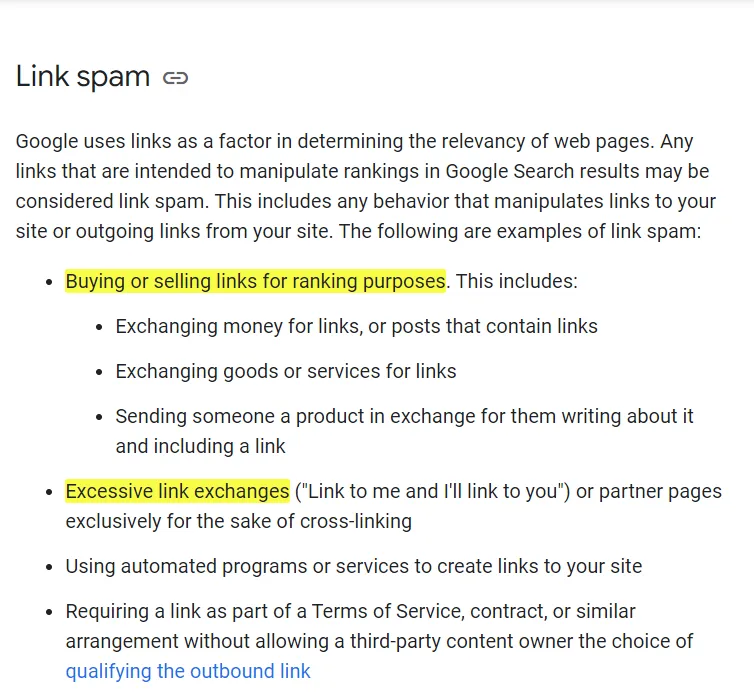
You’ve heard all the hype about SEO. You see people on the internet talking about how they increased their sales. Then you hear a competitor’s story about how they built their business with SEO etc etc etc.
And now you’ve invested time (maybe even money), but somehow your SEO strategy is still not working.
So, what’s going wrong? And more importantly, how do you fix it? Let’s find out.
Table of contents
- You’re Chasing Keywords, Not Intent
- Your Content Isn’t Actually Helpful
- Your Website is Slow (Like, Really Slow)
- You’re Ignoring Mobile Users
- You Don’t Have a Solid Backlink Strategy
- Your On-Page SEO is Sloppy
- You’re Not Keeping Up with SEO Trends
- In Conclusion
- Frequently Asked Questions
1. You’re Chasing Keywords, Not Intent
Back in the day, SEO was all about keywords. You could stuff your website with the right keywords and boom—you were on page one of Google.
But times have changed.
Google’s algorithm has evolved and it’s no longer just about matching keywords—it’s about understanding what people really want when they search. This is what we call user intent.
Let’s say someone types “best budget laptop” into Google. What’s their intent? They could be looking for a list of affordable laptops, a guide to choosing the right one or a product page where they can make a purchase.
If you’re just focusing on keywords like “budget laptop” without considering why people are searching – you are going nowhere.
So here’s how it works. If your content isn’t delivering what users expect, they’ll leave your site quickly—and Google notices that.
It’s a signal to Google that people didn’t find what they were looking for. So it will not boost your rank.
You can take the help of an SEO company to figure out search intent and create content that matches it.
2. Your Content Isn’t Actually Helpful
If your content isn’t genuinely helpful, people aren’t going to stick around. You can have all the right keywords in place — but if your content is shallow or just a sales pitch in disguise, users will leave your website.
Then Google won’t push your ranking.
And Google’s algorithm, particularly after its updates like E-E-A-T (Experience, Expertise, Authority, Trustworthiness) prioritises content that provides real value to readers.
Think of it this way— if a visitor lands on your blog titled “10 Tips for Growing Your Business” and get generic advice like “Hire a good team” or “Invest in marketing,” they’ll be disappointed.
They’re expecting more in-depth, actionable advice. So, when your content doesn’t deliver, they will bounce—and that’s a big red flag for Google.
So we advise outsourcing content writing services so that you can improve your content.
3. Your Website is Slow (Like, Really Slow)
Imagine clicking on a website and it takes 5 seconds to load. Frustrating, right? Well, you’re not alone—53% of mobile users abandon sites that take longer than three seconds to load.
So, speed matters — both for user experience and SEO. Google knows that users hate waiting, so they’ve made page speed a ranking factor.
But beyond that, slow load times can also impact other important SEO metrics like bounce rate, dwell time (how long someone stays on your page) and even conversion rates.
Get your site speed checked and consult a web development company to improve its speed.
4. You’re Ignoring Mobile Users
Almost 56% of all Google searches now happen on mobile devices. So, if your site isn’t optimised for mobile — you’re potentially missing out on more than half of your audience.
Moreover, Google has started mobile-first indexing since September 2020. We won’t go into technicalities. But just for your information — it means that Google primarily looks at the mobile version of your site to determine your rankings.
So, if you are publishing high-quality content on your website with the right keyword intent, perhaps your website isn’t mobile-friendly.
5. You Don’t Have a Solid Backlink Strategy
Backlinks are like votes of confidence for your website. When reputable sites link to your content, it tells Google, “Hey, this website is worth checking out.”
However, it’s not like you managed to get 100 backlinks and boom your website is ranking. Because quality backlinks matter the most. A single backlink from a high-authority site can be more valuable than 100 links from low-quality directories.
If you don’t have a plan to attract backlinks or worse, if you’re using shady practices like buying links, you need to rethink your SEO strategy.
Because Google penalises sites with unnatural or spammy backlink profiles.

Here’s How to Create Quality Backlinks
Start by creating content that’s worthy of being linked to. This could be in-depth guides, original research or useful tools.
Once you have great content, reach out to other websites in your niche for guest blogging opportunities, collaborate on content or pitch your article as a resource.
6. Your On-Page SEO is Sloppy
Even the best content can go unnoticed if it’s not optimised properly using on-page SEO strategies.
Here are on-page SEO elements that you need to fix to improve your SEO efforts.
- Title tags
- Meta descriptions
- Header tags
- Image Alt text
- Internal linking
Title tags and meta descriptions, in particular, are incredibly important because they directly affect your click-through rate (CTR).

For Title tags, make sure each page has a unique and descriptive title that includes your target keyword. Keep it between 40-60 characters because research says that meta tags with this length have the highest CTR.
Then for Meta descriptions, write convincing, action-oriented meta descriptions (under 160 characters) that include your keyword and give users a reason to click.
And to fix the Header tags, structure your content logically using H1, H2, H3, H4 and H5. Your main title should be wrapped in an H1 tag and subsequent sections should use H2, H3 and so on.
This not only helps with SEO but also improves readability, allowing users and search engines to quickly understand the hierarchy of information.
Additionally, update alt text when you use images in your content. Because Google can’t “see” your images. So, it relies on alt text to understand what they’re about.
Make sure each image has descriptive alt text that includes relevant keywords, but don’t stuff them unnecessarily.
Lastly, link other relevant pages within your website. For example, you can give a link to another blog in case your readers want more in-depth information.
7. You’re Not Keeping Up with SEO Trends
SEO is constantly changing, thanks to Google’s frequent algorithm updates and shifts in user behaviour.
What worked a few years ago might not work today. If you’re still relying on outdated tactics—like keyword stuffing, focusing solely on backlinks or ignoring voice search—you’re going to fall behind.
We mentioned two algorithm updates in this blog itself. Google keeps refreshing the algorithm. Follow SEO experts to keep up with these updates and adapt your strategies accordingly.
Conclusion
If your SEO strategy is not working, it doesn’t mean SEO is dead. It just means you need to change your approach and make a few improvements.
If you can identify the common mistakes outlined in this blog and implement the right fixes, you can easily turn things around.
Focus on the user—create content that answers their questions, provide a seamless experience on mobile and desktop and keep adapting to the latest trends.
And hey if you think, it is time to consult an SEO company — We are here for you. Just tell us your requirements at hello@florafountain.com. Our team will help you bring more sales by just optimising your SEO strategy.



